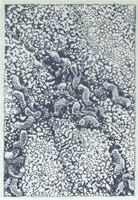|
Ancylobacter Oerskovii
''Ancylobacter oerskovii'' is a Gram-negative, pleomorphic, rod-shaped, non-spore-forming bacteria from the family of Xanthobacteraceae which has been isolated from soil from Muğla in Turkey. Deutsche Sammlung von Mikroorganismen und Zellkulturenbr>/ref> ''Ancylobacter oerskovii'' has the ability to utilize oxalic acid Oxalic acid is an organic acid with the systematic name ethanedioic acid and formula . It is the simplest dicarboxylic acid. It is a white crystalline solid that forms a colorless solution in water. Its name comes from the fact that early inve .... References Further reading * External linksType strain of ''Ancylobacter oerskovii'' at Bac''Dive'' - the Bacterial Diversity Metadatabase Hyphomicrobiales Bacteria described in 2008 {{Hyphomicrobiales-stub ... [...More Info...] [...Related Items...] OR: [Wikipedia] [Google] [Baidu] |
Bacteria
Bacteria (; singular: bacterium) are ubiquitous, mostly free-living organisms often consisting of one biological cell. They constitute a large domain of prokaryotic microorganisms. Typically a few micrometres in length, bacteria were among the first life forms to appear on Earth, and are present in most of its habitats. Bacteria inhabit soil, water, acidic hot springs, radioactive waste, and the deep biosphere of Earth's crust. Bacteria are vital in many stages of the nutrient cycle by recycling nutrients such as the fixation of nitrogen from the atmosphere. The nutrient cycle includes the decomposition of dead bodies; bacteria are responsible for the putrefaction stage in this process. In the biological communities surrounding hydrothermal vents and cold seeps, extremophile bacteria provide the nutrients needed to sustain life by converting dissolved compounds, such as hydrogen sulphide and methane, to energy. Bacteria also live in symbiotic and parasitic re ... [...More Info...] [...Related Items...] OR: [Wikipedia] [Google] [Baidu] |
Pseudomonadota
Pseudomonadota (synonym Proteobacteria) is a major phylum of Gram-negative bacteria. The renaming of phyla in 2021 remains controversial among microbiologists, many of whom continue to use the earlier names of long standing in the literature. The phylum Proteobacteria includes a wide variety of pathogenic genera, such as '' Escherichia'', '' Salmonella'', '' Vibrio'', '' Yersinia'', '' Legionella'', and many others.Slonczewski JL, Foster JW, Foster E. Microbiology: An Evolving Science 5th Ed. WW Norton & Company; 2020. Others are free-living (non parasitic) and include many of the bacteria responsible for nitrogen fixation. Carl Woese established this grouping in 1987, calling it informally the "purple bacteria and their relatives". Because of the great diversity of forms found in this group, it was later informally named Proteobacteria, after Proteus, a Greek god of the sea capable of assuming many different shapes (not after the Proteobacteria genus ''Proteus''). In 2021 the In ... [...More Info...] [...Related Items...] OR: [Wikipedia] [Google] [Baidu] |
Alphaproteobacteria
Alphaproteobacteria is a class of bacteria in the phylum Pseudomonadota (formerly Proteobacteria). The Magnetococcales and Mariprofundales are considered basal or sister to the Alphaproteobacteria. The Alphaproteobacteria are highly diverse and possess few commonalities, but nevertheless share a common ancestor. Like all ''Proteobacteria'', its members are gram-negative and some of its intracellular parasitic members lack peptidoglycan and are consequently gram variable. Characteristics The Alphaproteobacteria are a diverse taxon and comprises several phototrophic genera, several genera metabolising C1-compounds (''e.g.'', ''Methylobacterium'' spp.), symbionts of plants (''e.g.'', '' Rhizobium'' spp.), endosymbionts of arthropods (''Wolbachia'') and intracellular pathogens (''e.g. Rickettsia''). Moreover, the class is sister to the protomitochondrion, the bacterium that was engulfed by the eukaryotic ancestor and gave rise to the mitochondria, which are organelles in eukaryoti ... [...More Info...] [...Related Items...] OR: [Wikipedia] [Google] [Baidu] |
Hyphomicrobiales
The ''Hyphomicrobiales'' are an order of Gram-negative Alphaproteobacteria. The rhizobia, which fix nitrogen and are symbiotic with plant roots, appear in several different families. The four families ''Nitrobacteraceae'', '' Hyphomicrobiaceae'', ''Phyllobacteriaceae'', and ''Rhizobiaceae'' contain at least several genera of nitrogen-fixing, legume-nodulating, microsymbiotic bacteria. Examples are the genera ''Bradyrhizobium'' and '' Rhizobium''. Species of the '' Methylocystaceae'' are methanotrophs; they use methanol (CH3OH) or methane (CH4) as their sole energy and carbon sources. Other important genera are the human pathogens ''Bartonella'' and '' Brucella'', as well as ''Agrobacterium'' (useful in genetic engineering). Taxonomy Accepted families * '' Aestuariivirgaceae'' Li ''et al''. 2019 * ''Afifellaceae'' Hördt ''et al''. 2020 * ''Ahrensiaceae'' Hördt ''et al''. 2020 * '' Alsobacteraceae'' Sun ''et al''. 2018 * '' Amorphaceae'' Hördt ''et al''. 2020 * '' Ancalo ... [...More Info...] [...Related Items...] OR: [Wikipedia] [Google] [Baidu] |
Xanthobacteraceae
The Xanthobacteraceae are a family of bacteria. Among others, they include ''Azorhizobium'', a genus of rhizobia. ''Xanthobacteraceae'' is a diverse group of Gram-negative, rod-shaped, sometimes twisted chemoorganotrophic or facultative chemolithoautotrophic bacteria which might be motile or non-motile depending on the bacteria. Cells are 0.4–1.0 × 0.8–6 µm. However, if cells are grown in the presence of alcohol as a sole carbon source the cells can be up to 10 µm long. None of the bacteria form spores and colonies are opaque and slimy. As the bacteria contains zeaxanthin dirhamnoside the colony looks slightly yellow. In 1978, Wiegel et al established the genus ''Xanthobacter'' based on the numerical taxonomic comparisons of microorganism that was included at that time to the genus ''Corynebacterium.'' In 2005, based on comparison of 16S rRNA of the members of Alphaproteobacteria, Lee ''et al''. proposed the family ''Xanthobacteraceae'' with five genera includin ... [...More Info...] [...Related Items...] OR: [Wikipedia] [Google] [Baidu] |
Ancylobacter
''Ancylobacter'' is a genus of aerobic bacteria from the family of Xanthobacteraceae The Xanthobacteraceae are a family of bacteria. Among others, they include '' Azorhizobium'', a genus of rhizobia. ''Xanthobacteraceae'' is a diverse group of Gram-negative, rod-shaped, sometimes twisted chemoorganotrophic or facultative chemo .... Phylogeny The currently accepted taxonomy is based on the List of Prokaryotic names with Standing in Nomenclature (LPSN). The phylogeny is based on whole-genome analysis. References Further reading * * Hyphomicrobiales Bacteria genera {{Hyphomicrobiales-stub ... [...More Info...] [...Related Items...] OR: [Wikipedia] [Google] [Baidu] |
Gram-negative
Gram-negative bacteria are bacteria that do not retain the crystal violet stain used in the Gram staining method of bacterial differentiation. They are characterized by their cell envelopes, which are composed of a thin peptidoglycan cell wall sandwiched between an inner cytoplasmic cell membrane and a bacterial outer membrane. Gram-negative bacteria are found in virtually all environments on Earth that support life. The gram-negative bacteria include the model organism ''Escherichia coli'', as well as many pathogenic bacteria, such as '' Pseudomonas aeruginosa'', '' Chlamydia trachomatis'', and '' Yersinia pestis''. They are a significant medical challenge as their outer membrane protects them from many antibiotics (including penicillin), detergents that would normally damage the inner cell membrane, and lysozyme, an antimicrobial enzyme produced by animals that forms part of the innate immune system. Additionally, the outer leaflet of this membrane comprises a complex ... [...More Info...] [...Related Items...] OR: [Wikipedia] [Google] [Baidu] |
Pleomorphism (microbiology)
In microbiology, pleomorphism (from Ancient Greek , ''pléō'', "more", and , ''morphḗ'', form), also pleiomorphism, is the ability of some microorganisms to alter their morphology, biological functions or reproductive modes in response to environmental conditions. Pleomorphism has been observed in some members of the Deinococcaceae family of bacteria. The modern definition of pleomorphism in the context of bacteriology is based on ''variation'' of morphology or functional methods of the individual cell, rather than a heritable ''change'' of these characters as previously believed. Bacteria In the first decades of the 20th century, the term "pleomorphism" was used to refer to the idea that bacteria change morphology, biological systems, or reproductive methods dramatically according to environmental cues. This claim was controversial among microbiologists of the time, and split them into two schools: the monomorphists, who opposed the claim, and the pleomorphists such as Antoin ... [...More Info...] [...Related Items...] OR: [Wikipedia] [Google] [Baidu] |
Rod-shaped
A bacillus (), also called a bacilliform bacterium or often just a rod (when the context makes the sense clear), is a rod-shaped bacterium or archaeon. Bacilli are found in many different taxonomic groups of bacteria. However, the name '' Bacillus'', capitalized and italicized, refers to a specific genus of bacteria. The name Bacilli, capitalized but not italicized, can also refer to a less specific taxonomic group of bacteria that includes two orders, one of which contains the genus ''Bacillus''. When the word is formatted with lowercase and not italicized, 'bacillus', it will most likely be referring to shape and not to the genus at all. Bacilliform bacteria are also often simply called rods when the bacteriologic context is clear. Bacilli usually divide in the same plane and are solitary, but can combine to form diplobacilli, streptobacilli, and palisades. * Diplobacilli: Two bacilli arranged side by side with each other. * Streptobacilli: Bacilli arranged in chains. * Cocc ... [...More Info...] [...Related Items...] OR: [Wikipedia] [Google] [Baidu] |
Endospore
An endospore is a dormant, tough, and non-reproductive structure produced by some bacteria in the phylum Bacillota. The name "endospore" is suggestive of a spore or seed-like form (''endo'' means 'within'), but it is not a true spore (i.e., not an offspring). It is a stripped-down, dormant form to which the bacterium can reduce itself. Endospore formation is usually triggered by a lack of nutrients, and usually occurs in gram-positive bacteria. In endospore formation, the bacterium divides within its cell wall, and one side then engulfs the other. Endospores enable bacteria to lie dormant for extended periods, even centuries. There are many reports of spores remaining viable over 10,000 years, and revival of spores millions of years old has been claimed. There is one report of viable spores of '' Bacillus marismortui'' in salt crystals approximately 250 million years old. When the environment becomes more favorable, the endospore can reactivate itself into a vegetative state. Mo ... [...More Info...] [...Related Items...] OR: [Wikipedia] [Google] [Baidu] |
Muğla
Muğla () is a city in southwestern Turkey. The city is the center of the District of Menteşe and Muğla Province, which stretches along Turkey's Aegean coast. Muğla's center is situated inland at an altitude of 660 m and lies at a distance of about from the nearest seacoast in the Gulf of Gökova to its south-west. Muğla (Menteşe) district area neighbors the district areas of Milas, Yatağan and Kavaklıdere to its north by north-west and those of Ula and Köyceğiz, all of whom are dependent districts. Muğla is the administrative capital of a province that incorporates internationally well-known and popular tourist resorts such as Bodrum, Marmaris, Datça, Dalyan, Fethiye, Ölüdeniz and also the smaller resort of Sarigerme. Geography The district area's physical features are determined by several pot-shaped high plains, delimited by mountains, of which the largest is the one where the city of Muğla is located and which is called under the same name (''M ... [...More Info...] [...Related Items...] OR: [Wikipedia] [Google] [Baidu] |
Turkey
Turkey ( tr, Türkiye ), officially the Republic of Türkiye ( tr, Türkiye Cumhuriyeti, links=no ), is a list of transcontinental countries, transcontinental country located mainly on the Anatolia, Anatolian Peninsula in Western Asia, with a East Thrace, small portion on the Balkans, Balkan Peninsula in Southeast Europe. It shares borders with the Black Sea to the north; Georgia (country), Georgia to the northeast; Armenia, Azerbaijan, and Iran to the east; Iraq to the southeast; Syria and the Mediterranean Sea to the south; the Aegean Sea to the west; and Greece and Bulgaria to the northwest. Cyprus is located off the south coast. Turkish people, Turks form the vast majority of the nation's population and Kurds are the largest minority. Ankara is Turkey's capital, while Istanbul is its list of largest cities and towns in Turkey, largest city and financial centre. One of the world's earliest permanently Settler, settled regions, present-day Turkey was home to important Neol ... [...More Info...] [...Related Items...] OR: [Wikipedia] [Google] [Baidu] |




